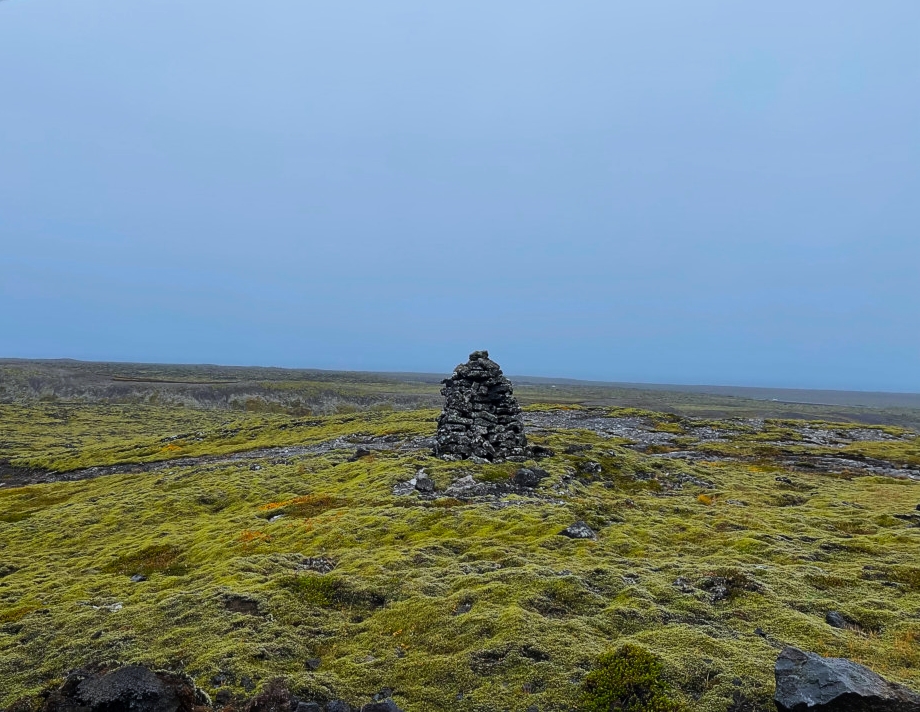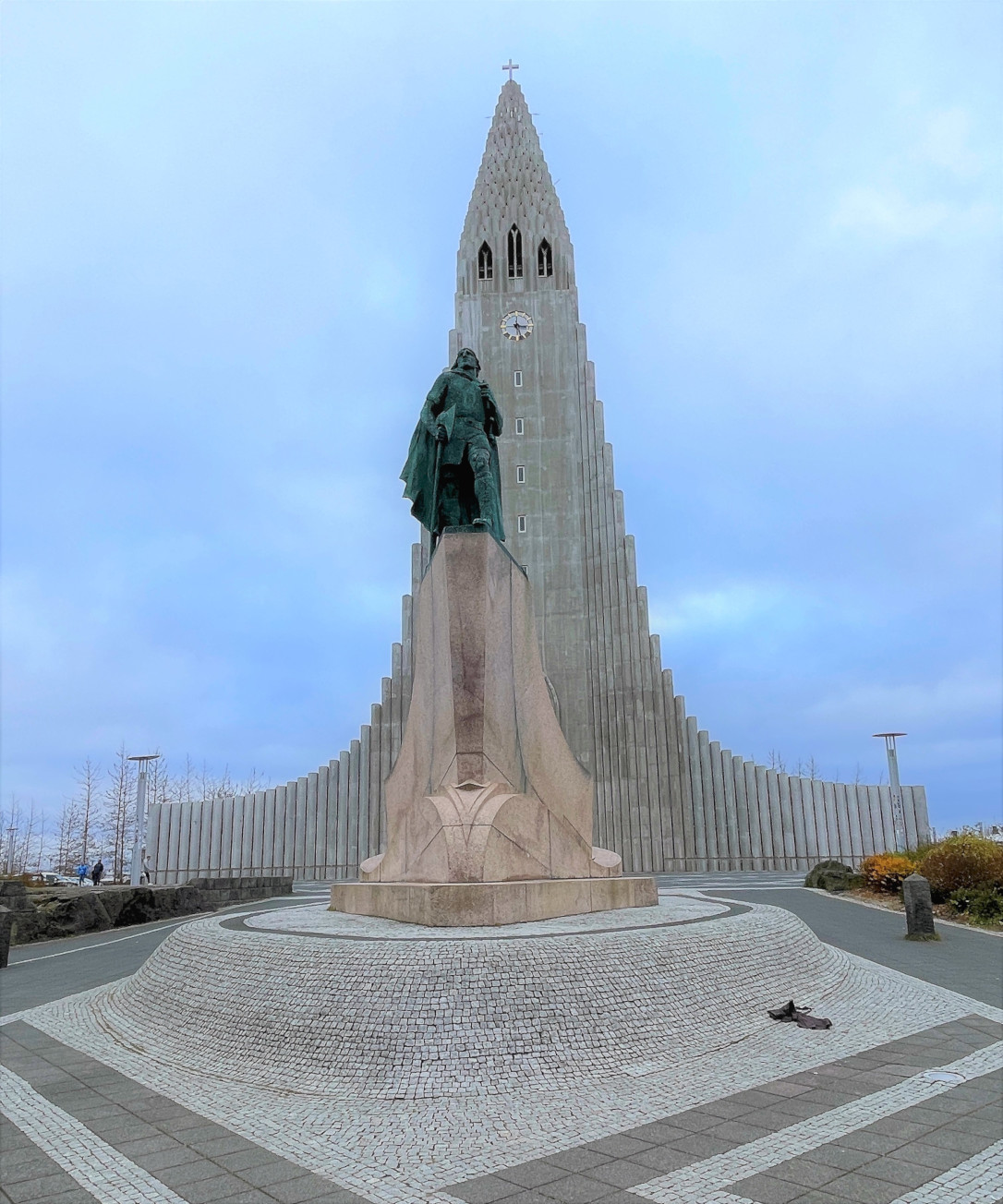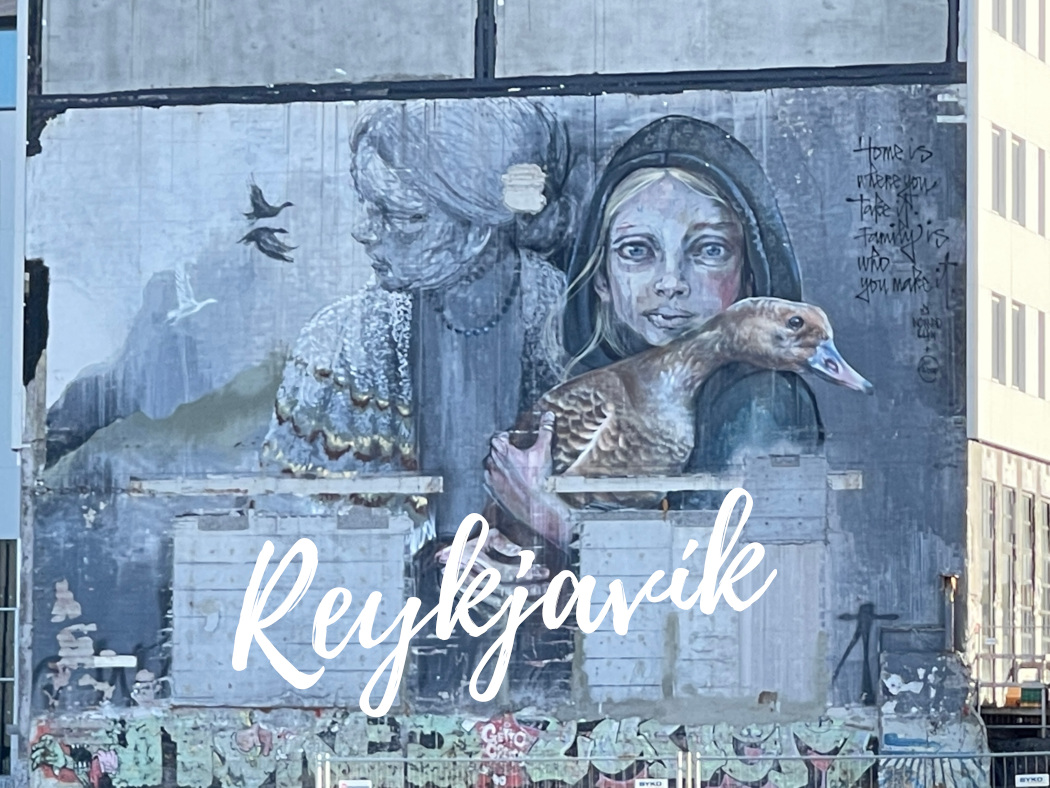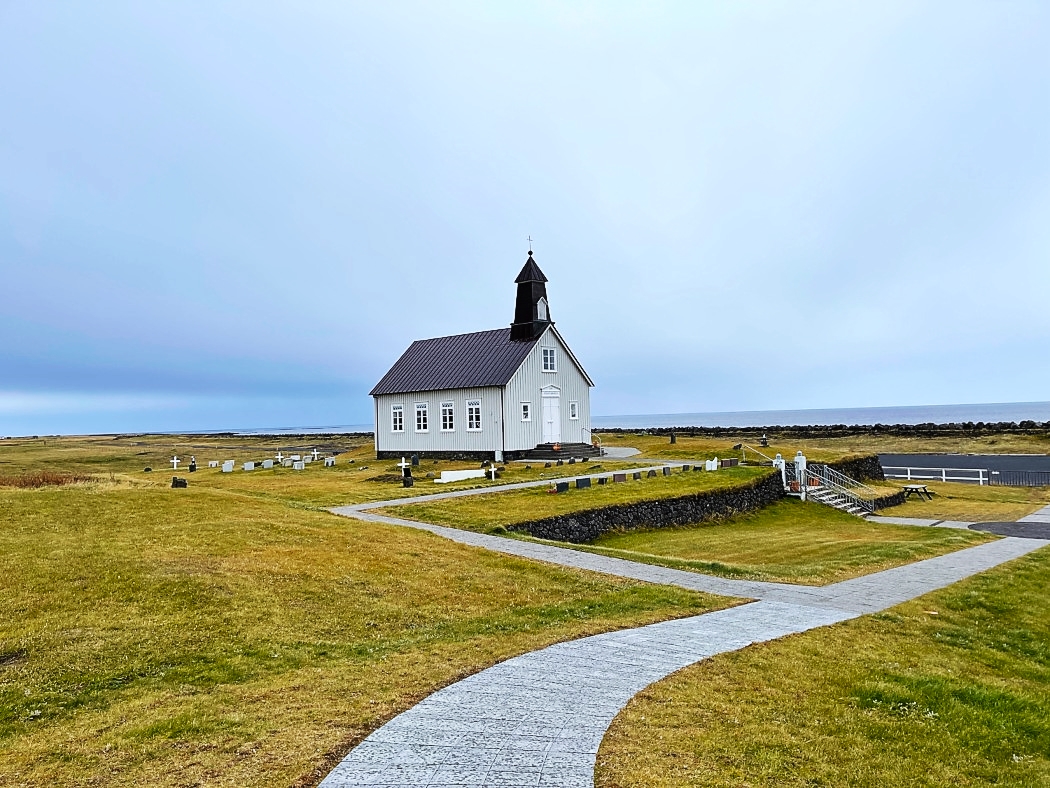One of Reykjavík’s busiest shopping areas, Laugavegur, has for over 100 years been subject to ghostly visitations. The reason for their visit seems to differ, but sometimes the spirits come to us for help. This is a story of a group of spiritists belonging to the Icelandic Society for Psychical Research, who received directions on how to help the dead with unfinished business.
Loss of loved ones

Lilja Kristjánsdóttir (1874-1954) had lived at Laugavegur 37 in Reykjavík her entire adult life. She and her husband, Árni Jónsson (1874-1931) moved in as newlyweds and lived out their lives in this home. The couple had four children together, but only one of them made it into adulthood. Their daughter, Kristjana (1903-1986) was the only survivor; she married Níels Carlsson (1897-1984). They took over the apartment on Laugavegur 37 where she too lived until she died in 1986.

Árni and Lilja with their surviving daughter Kristjana. Photographer: Pétur Brynjólfsson (1882-1930)
1931 Lilja had lost three children and now her husband as well. Spiritism had been a part of the couple's life and she was not about to give that up, instead, she saw this as an opportunity to get contact him from the other side. Sometimes it isn't about how we can help the dead, but how the dead can help us.
The medium
Lilja knew the Society’s medium, Hafsteinn Björnsson, and his extraordinary gift to connect with the other side. To this day, people remember Hafsteinn’s reputation as a remarkable medium. Hafsteinn had several spirit guides, which the spiritist Society called “Spirit controls”. The job of a spirit control was to take control once the medium fell into a trance.
For Hafsteinn, one such spirit was the late Runólfur Runólfsson (1828-1879), also known as “Rúnki”.
As it was at all séances, the medium had no control over what spirit guide took over his vocal cords. The regular sitters were tired of a certain spirit that kept appearing and asking for its leg back. Whenever they asked for who the spirit was in this life, it gave them a fake name. Sometimes it called itself Jón Jónsson (John Doe) and other times Maður Mannson (Man Manson). The spirit guide couldn’t understand why the sitters were so hung up on knowing his name; it was completely irrelevant.
The séance
The evening on January 1st, 1939 Lilja invited Hafsteinn to do a séance in her home. Among the sitters were her daughter, Kristjana, and her husband Níels. Níels invited his cousin Lúðvík Guðmundsson (1889-1968) and his wife, Jórunn Guðmundsdóttir (1890-1949) from Vesturgata 56 to join them.
The sitters gathered around Lilja’s table. Ever since the beginning when the Society called itself The Experimental Society, they started each séance by singing a psalm. Once the opening song was over, Hafsteinn entered a trance state. The spirit calling itself Jón Jónsson came through yet again. The sitters got ready to listen to its rant about the lost leg. To their surprise, all the spirit talked about was how fortunate it was to meet the guest (sitter) named Lúðvík. (Hafsteinn did not know Lúðvík and had never met him until that evening).
Lúðvík was confused. He did not know who this spirit-being was or why it felt so lucky to meet him. He was very curious to find out who it could be. Is it possible that he knew the spirit in the flesh? Was this his chance to help the dead? The spirit refused to tell him who he was but ensured Lúðvík that he knew where his leg was; Sandgerði.

Photo: Fish processing factory. Both buildings house sailor apartments in the attic. Photo appeared in Tíminn on 28th of April, 1948, p.8.
This made a little more sense now because Lúðvík owns a fish processing factory in Sandgerði.
The spirit guide
At this point, Lúðvík demanded to know who the spirit was in its earthly form. How could the sitters possibly help the dead if the spirit is not honest with them? The sitters gave the spirit an ultimatum. Either it revealed who it was or they would not help find the leg.
Furious, the spirit-being disappeared and did not return until early spring 1939. This time the spirit was ready to tell them who it was; Runólfur Runólfsson (1828-1879), nicknamed Runki.
Runki's last day alive

Runki shared with the sitters the tragic story of his death. He had been drinking in Keflavík and getting latewhen he walked back home. On the way, he stopped by at Sveinbjörn Þórðarson (1817-1893). Sveinbjörn's wife made sure Runki got something to eat and drink, but as soon as he was refreshed he got ready to leave. The weather had taken a turn for the worse, so Sveinbjörn offered to walk with him. Runki did not like the idea at all and in an angry tone told Sveinbjörn that he was not going anywhere unless it went alone. Besides, he only lived a 15-minute walk away. With that, he left by himself.

Rúnólfur was not dressed for the stormy weather and his clothes were soaking wet and cold. To shield from the rainstorm, he hurried over to Kambinn, a ridge underneath Flankastaða Cliff (near non-existent today). Freezing and wet, Runki grabbed his bottle and drank until he fell asleep. While he lay asleep under the cliff, the floods came and flushed him out into the ocean.

This was on October 1879, but his body didn't wash up on shore until January 1880. The first ones to find his body were dogs and ravens who tore it to shreds. Finally, some passersby found his body, and he received a proper burial in Útskála cemetery. Unfortunately, they hadn't been able to find his thigh bone, so they did not bury it with the rest of his body. The waves pulled his femur back into the ocean, only to wash up on shore sometime later in Sandgerði. Ever since it had traveled from place to place but was now at Lúðvík's house in Sandgerði.
Jamestown
Jamestown was a brand new ship made in Richmond, U.S.A. in 1879. It was scheduled to leave Maine, U.S.A. in November 1880 with lumber to Liverpool, England. The ship had a rocky start from the beginning when four crew members jumped ship before leaving the harbor. It only went downhill from there. Long story short, they got caught in an awful storm and after several weeks, the steamer, Ethiopia rescued them. They left the newly built Jamestown which drifted out towards an unknown fate.
With the Jamestown crew (27 total) safely in Glasgow, Scotland, their ship continued drifting until the evening of June 26, 1881, when it was stranded in Hafnir, Iceland.
A blessing in disguise

Despite the unfortunate fate of Jamestown and its crew, the ship came as a blessing to the Hafnir residents. One morning they woke up to a hip carrying the highest quality timber at their doorsteps. It had been about 1000 years since the Vikings practically deforested Iceland, so timber was a precious possession.
Before auctioning off the wood, the residents who helped salvage Jamestown, split the wood into 1/3 and divided it among themselves. Among the participants was Sveinbjörn Þórðarson, the man who fed Runólfur.

Photo: The lumber schooner 'Crescent' built in 1904. Jamestown was built in 1879 and was transporting lumber. Photopgrapher unknown.
With his share of the timber, Sveinbjörn built Sandgerði's first house, Efra-Sandgerði (Upper-Sandgerði). He finished building the house in 1881. Soon after many homes in the area were built from that wood.
The drowning

Sveinbjörn had two sons, Jón and Einar. Jón was a diligent captain, just like his father. Sveinbjörn wanted his sons to grow into brave men and always pushed his boys to go further out into the ocean. He even pushed them to go when the waters were known to be quite hazardous.
In 1892, Jón drowned while he was sailing and it filled Sveinbjörn with guilt. He was certain it was his tough upbringing that drove his son to his death. The following year, in 1893, Sveinbjörn passed away.
The skulls

Photo: The two skulls found in Sandgerði. Photo appeared in Vísir Sunnudagsblaðið in the article “Saga úr Sandgerði” licensed by CC0 1.0
One day someone found two human skulls on the beach in Sandgerði. Nobody knew who the skulls belonged to, but they assumed they were of drowned sailors. Some suspected one of them was Jón Sveinbjörnsson who drowned in 1892. Nobody cared about these skulls or what happened to them, so for the longest time, they were kept in a storage area. Eventually, people forgot all about them.
Then one day a person (unknown) had trouble sleeping and began lucid dreaming. When people heard of the vision, a few clairvoyant people spoke up and claimed to have experienced something very similar. They had been approached by two male spirit-beings complaining about the poor treatment of their skulls.

By listening to those with clairvoyant abilities, the people were able to help the dead. The spirit-beings respectfully asked that they put their skulls in a peaceful place overlooking the ocean. In return, they promised that as long as their skulls overlooked the ocean in peace, not one boat would perish, nor would there be accidents at sea in Hamarssund.
The two spirits harassed the sailors both night and day, making it difficult for sailors to stay there. Today, countless ghost stories exist about the skulls. The house which stored the skulls was later the house of Loftur Loftsson, an important figure in Sandgerði’s history. Then Loftur sold the house to Lúðvík Guðmundsson, the man at the séance on Laugavegur 37. Little did Lúðvík know; the house came with a set of human skulls.

Sailors often stayed at the house and many of them told stories of ghosts. One sailor had callously tossed the skulls to the side. This was definitely not the help the dead needed. The following night, two spirit-beings approached the disrespectful sailor while he slept. They beat him to where he woke up with bruises on his face. The sailor ran off and never returned.
After this horrifying incident, Lúðvík took the skulls and put them in a glass case facing the ocean. While in town, he struck a conversation with a fellow resident about the skulls. Then the man wanted to know if Lúðvík had found other bones in the house.
The femur is found
In 1940, Lúðvík headed over to visit Helgi, a man living in the northeast part of the house. After sharing his story, Helgi told him he knew about this rumor and believed they hid it within the walls in his room. The men tore a hole in the wall and sure enough, the leg was in there. It was a very long femur. This was to be expected since Runólfur was about 6’6″ (198 cm) tall.
Lúðvík took the femur and had a fancy coffin built for it. Sometime later, the femur was put to rest with the rest of Runki’s remains in the cemetery. The femur received a funeral service equal to any other funeral service. The priest gave a sermon and the church choir sang. Many people gathered at the funeral, both from Sandgerði and Reykjavík. Among the guests were Níels, his wife Kristjana, Lilja and Gíslína Kvaran (Einar Kvaran’s wife). After the funeral service, they went to the priest’s house for coffee.

Photo: The Jamestown anker can be seen right outside the Kirkjuvogskirkja cemetery in Hafnir.
The séance after the service, they were all gathered again at Lilja's house on Laugavegur 37. Runólfur appeared once again, but this time he thanked them for what they had done. He said he had been present at the service and described it in every detail, up to every cake assortment at the Priest's house.
That's how the spiritists knew how to help the dead this time. Each time was slightly different, but they had learned that we need closure on events in this life to rest in the next. Therefore, we need to do what we can to help them on their journey.









